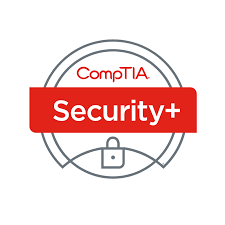
Overview
CompTIA's vendor-neutral certification program is one of the best recognized in the IT industry. Since CompTIA developed its A+ credential in 1993, it has issued more than two million certifications. In early 2018, CompTIA introduced its CompTIA Infrastructure Career Pathway. While you'll still see the same familiar certifications that form the bedrock of the CompTIA certification portfolio, this new career pathway program more closely aligns CompTIA certifications to the real-world skills that IT professionals need to ensure success when managing and supporting IT infrastructures.
What you will learn
- A thorough understanding of knowledge and skills required for an IS AuditorHow to analyze indicators of compromise and determine the type of malware
- How to compare and contrast types of attacks and explain threat actor types and attributes
- How to explain penetration testing and vulnerability scanning concepts
- How to explain the impact associated with types of vulnerabilities
- How to install and configure network components, both hardware and software-based, to support organizational security
- How to use appropriate software tools to assess the security posture of an organization
- How to troubleshoot common security issues
- How to analyze and interpret output from security technologies
- How to deploy mobile devices securely
- How to implement secure protocols
- How to explain use cases and purpose for frameworks, best practices and secure configuration guides
- How to implement secure network architecture concepts and secure systems design
- How to explain the importance of secure staging deployment concepts
- How to explain the security implications of embedded systems
- How to summarize secure application development and deployment concepts
- How to summarize cloud and virtualization concepts
- How to explain how resiliency and automation strategies reduce risk
- How to explain the importance of physical security controls
- How to compare and contrast identity and access management concepts
- How to install and configure identity and access services
- How to implement identity and access management controls and how to differentiate common account management practices
- How to explain the importance of policies, plans and procedures related to organizational security
- How to summarize business impact analysis concepts
- How to explain risk management processes and concepts
- How to follow incident response procedures
- How to summarize basic concepts of forensics
- How to explain disaster recovery and continuity of operation concepts
- How to compare and contrast various types of controls
- How to carry out data security and privacy practices
- How to compare and contrast basic concepts of cryptography and how to explain cryptography algorithms and their basic characteristics
- How to install and configure wireless security settings
- How to implement public key infrastructure
